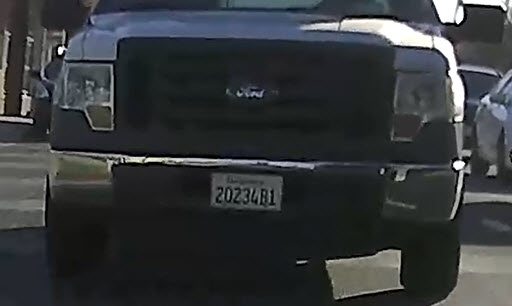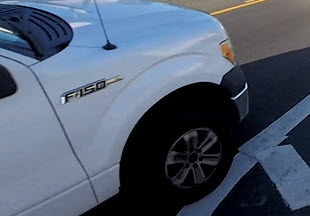For the last month or so I’ve adopted a new bike commute route to/from work that includes a short stretch of Adams Boulevard whose lane configuration between Crenshaw and Fairfax was recently and drastically changed from a four-lane roadway to two, with large and buffered bike lanes added.
This was done as part of the city’s Vision Zero Initiative, with a primary reason being that Adams Boulevard had become one of the most dangerous and deadliest roads in Los Angeles. According to LADOT, Adams saw 59 severe and fatal collisions between 2009 and 2019. From 2012 through 2019, nine people were killed in car crashes there: six pedestrians, a cyclist, and two people in cars.
The new bike lanes are glorious. Super-wide in both directions with additional buffer zones between them and the vehicular lanes, I greeted them with awe, which was quickly tempered by the reality of impatient motorists, now forced to stack up in the oft-backed-up single vehicular lane, who will regularly and fragrantly poach the bike lane to cut past the stack. I know this because it is the rare morning or evening commute when I’m on Adams Boulevard when I don’t witness such violations happening.
Case in point, one of the most egregious, which I encountered on my morning commute of March 2, 2022, at approximately 0735 hours involving the driver of a white Ford F150 truck, California license plate 20234B1, which you can watch in the video footage captured first from my rear-facing camera and next my front-facing helmet camera. In the first video the truck is in the distance behind me in the bike lane but eventually catches up to my position until it’s approximately one car-length behind me. The driver then signals right and merges back into the vehicle lane. The second video shows the driver passing me only to merge closely in front of me back into the bike lane where he continues forward for several more blocks until he’s out of sight.
This is an aggravated violation of California Vehicle Code Section 21209, which states: “Motorists can only drive on a bike lane to: (1) park; (2) enter or leave a roadway; or, (3) prepare for a turn from an intersection. A motorist that unlawfully drives on a bike lane must pay a fine of $238. Drivers that violate Vehicle Code 21209 VC will also receive one point on his DMV driving record.”


There’s a bunch of irony in this half-baked implementation of the Vision Zero Initiative. In making this modification of Adams Boulevard theoretically safer, they’ve actually compromised it for pedestrians and cyclists by leaving the bike lane buffered instead of protected. What’s the difference? “Buffered” is just space, usually delineated by paint on the asphalt. “Protected” involves some structure — at the minimum fixed bollards or pylons, at the maximum raised concrete islands — that provides an actual barrier between vehiclular traffic from bike traffic. Obviously with buffered lanes the opportunities for scofflaw motorists — like this one I met this morning, and those I will undoubtedly continue to meet going forward — to poach the bike lane and put others at risk
Which leaves me wondering the city’s thought process. Was raising the lanes to protected status a cost issue? Did they figure that after a couple cyclists or peds get mowed down by violators then they can always come back and upgrade it to a protected form. If so, how very un-Vision Zero of them. In the meantime, I’m not sure what the city expected. It takes away a full lane and expects the motorists who’ve long used that street and now impatiently stuck in all that additional traffic to behave and accept the delay? To NOT get angry and frustrated and make wrong decisions? I’m not excusing these actions, I’m just saying officials’ inaction comes off as either naive or abdicative by those who signed off on the final project.
And speaking of inaction, Lastly, in the interim it would productive if LADOT and LAPD law would organize and coordinate a plan to increase awareness and to attack violators. Increase signage as a preventative meaure a la those found in high-occupancy lanes on freeways And don’t just put a single patrol out there on a random basis issuing tickets for a couple hours, but conduct an actual long-term operation dedicated to making it clear that violators will not be tolerated.
But for right now, they are.
 Follow
Follow